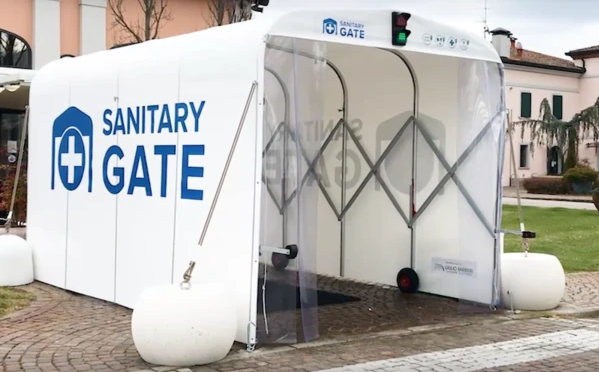- August 28, 2020
- Posted by: Pallav Tyagi
- Category: COVID

Since the outbreak of the Coronavirus pandemic, sanitization/disinfection tunnels have been the talk of the town, with many stations being set up around the entrances and exits of buildings in order to spray sanitizer/disinfectant on people entering/exiting the building. But the question remains, is this is a safe practice? Does this provide ample protection against the virus?
Health and Safety Hazard
Application of chemical disinfectants in a disinfection tunnel poses a major risk of inhalation, eye contact and skin contact.
Droplets that are inhaled into the deep lung tissue could be detrimental to one’s health. Although there exist disinfectants that are relatively non-hazardous, applying them in a manner inconsistent with the product label may have health ramifications.
Lack of Effectiveness
Fogging disinfectant over a person is not likely to prove very effective. For instance, soft surfaces like clothing can’t be disinfected. A surface to be disinfected, must be hard and non-porous in order to be disinfected. For a disinfectant to have efficacy, it must be applied to a clean, hard, non-porous surface with enough quantity to keep the surface wet for the required contact time. Since neither of the aforementioned conditions are likely to be fulfilled through this practice, disinfection/sanitation tunnels won’t help in reducing the viral load.
Does Not Mitigate the Risk of Transmission
People infected with COVID-19 may be carrying the virus in respiratory secretions in their upper respiratory tract and in their saliva. Fogging disinfectant over the skin does nothing to help against the large pool of virus that an infected person could be carrying within their body, particularly asymptomatic patients. An infected person will be rendered just as infectious after passing through the tunnel as he was before the process. The process could also lure people into a false sense of security. The may believe that they are safe which in turn may have a negative impact on their behaviors after the process with respect to maintaining social distancing and hand hygiene.
Lack of Regulatory Approval
In most countries, using a disinfectant in a manner inconsistent with the product label is illegal and the facility that does the same will be liable for financial penalties. Thus this practice is widely discouraged across organizations worldwide. Some examples are cited below:
PAHO/CDE/CE/COVID-19/20-0012 • © Pan American Health Organization, 2020.
World Health Organization (WHO). 16 May 2020
Health Care Without Harm (HCWH), 17 April 2020.
Coronavirus update: Disinfection tunnels.
Biswal M, Kanaujia R, Angrup A, Ray P, Mohan Singh S., Public Health. 2020;183:48-49.
Following are the steps that you can take to ensure the safety of people entering and exiting your facility:
- Follow recommendations from the WHO and local Government.
- Minimize the inflow of people into the facility and encourage social distancing. Use protective partition screens where necessary.
- Screening and temperature monitoring of all employees on a daily basis
- Masks must be made mandatory for all staff
- Educate employees on respiratory etiquette (coughing into a tissue and binning it immediately or coughing into the elbow) and hand hygiene.

